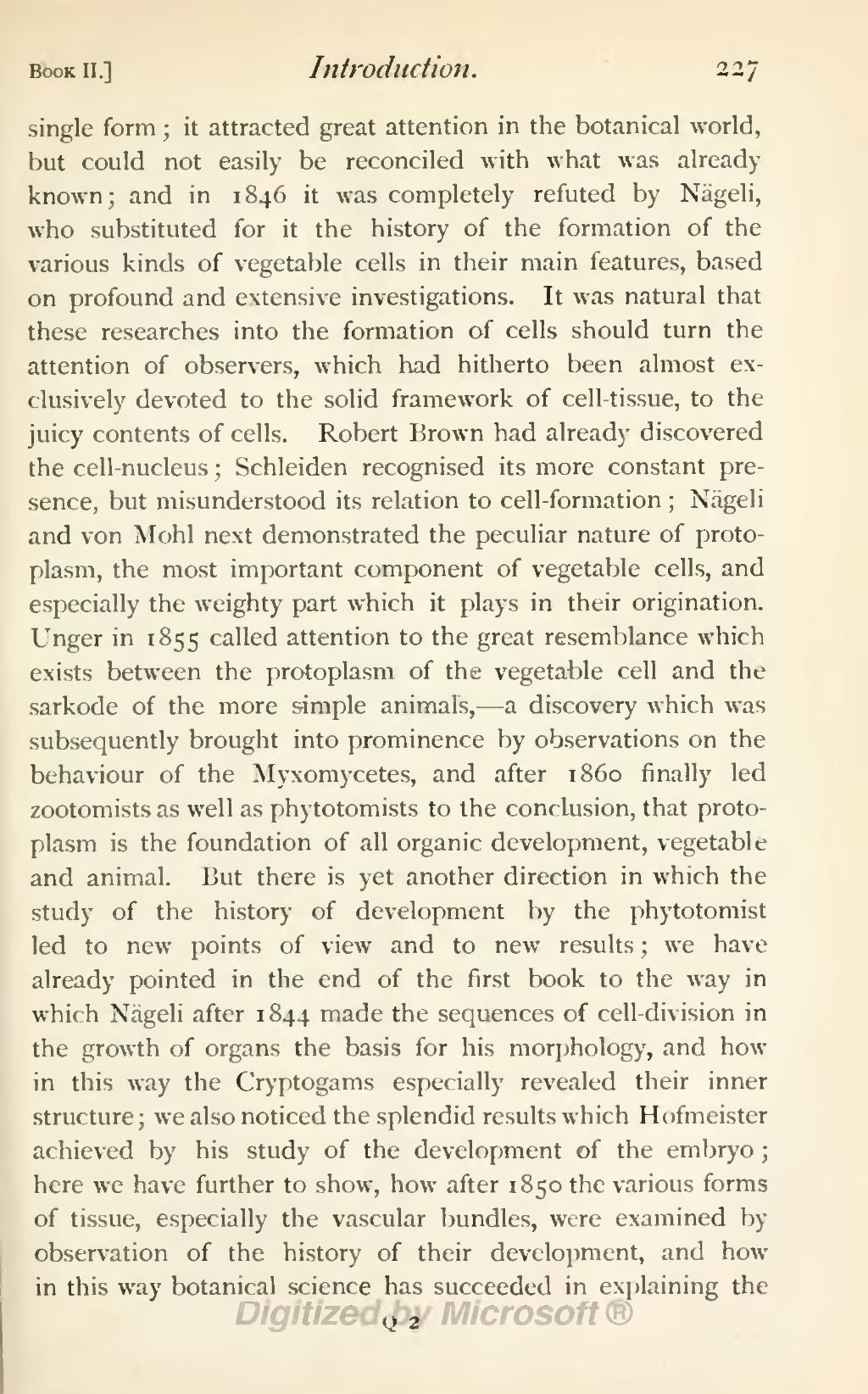single form; it attracted great attention in the botanical world, but could not easily be reconciled with what was already known; and in 1846 it was completely refuted by Nägeli, who substituted for it the history of the formation of the various kinds of vegetable cells in their main features, based on profound and extensive investigations. It was natural that these researches into the formation of cells should turn the attention of observers, which had hitherto been almost exclusively devoted to the solid framework of cell-tissue, to the juicy contents of cells. Robert Brown had already discovered the cell-nucleus; Schleiden recognised its more constant presence, but misunderstood its relation to cell-formation; Nägeli and von Mohl next demonstrated the peculiar nature of protoplasm, the most important component of vegetable cells, and especially the weighty part which it plays in their origination. Unger in 1855 called attention to the great resemblance which exists between the protoplasm of the vegetable cell and the sarkode of the more simple animals,—a discovery which was subsequently brought into prominence by observations on the behaviour of the Myxomycetes, and after 1860 finally led zootomists as well as phytotomists to the conclusion, that protoplasm is the foundation of all organic development, vegetable and animal. But there is yet another direction in which the study of the history of development by the phytotomist led to new points of view and to new results; we have already pointed in the end of the first book to the way in which Nägeli after 1844 made the sequences of cell-division in the growth of organs the basis for his morphology, and how in this way the Cryptogams especially revealed their inner structure; we also noticed the splendid results which Hofmeister achieved by his study of the development of the embryo; here we have further to show, how after 1850 the various forms of tissue, especially the vascular bundles, were examined by observation of the history of their development, and how in this way botanical science has succeeded in explaining the
